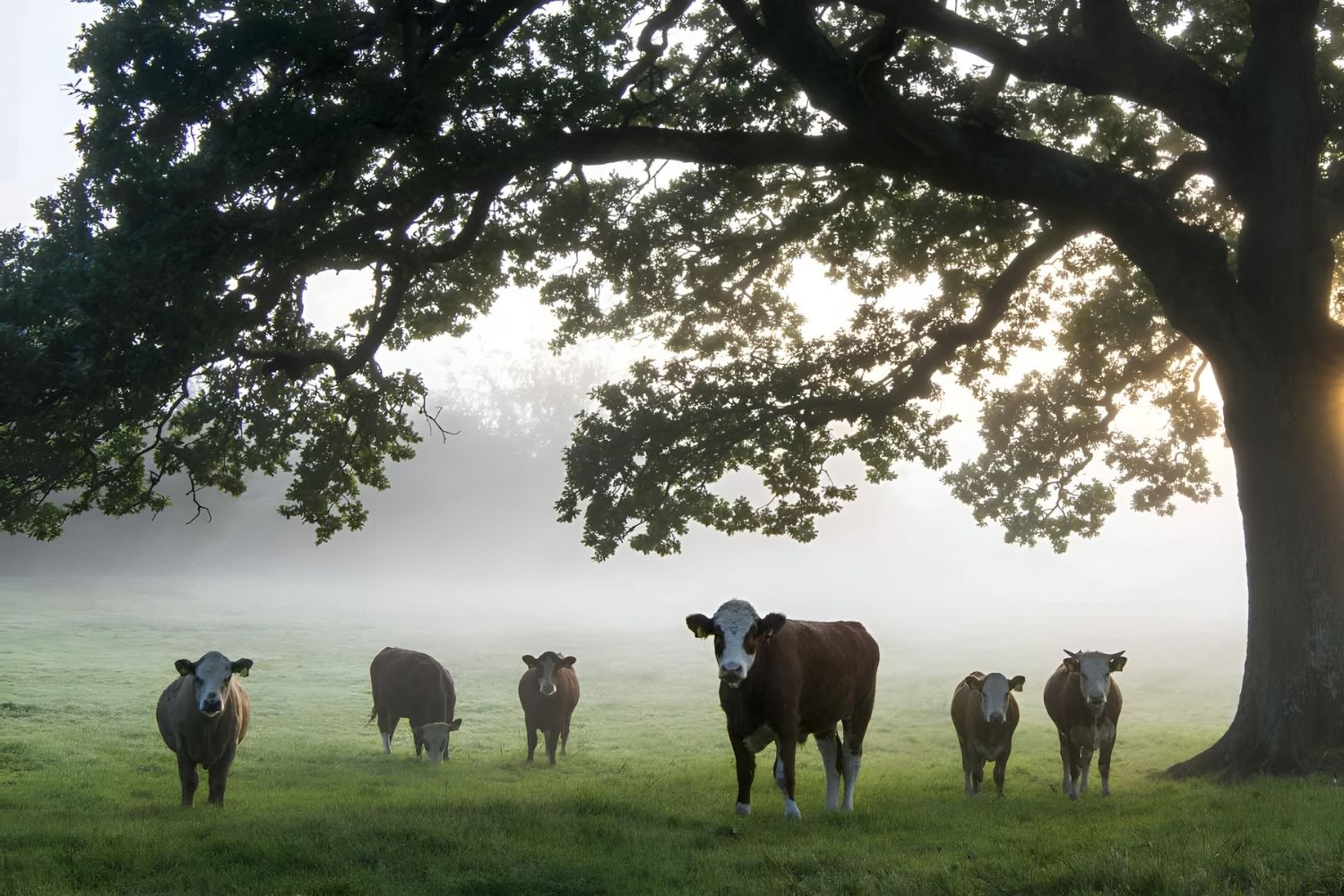
Silvopasture is an innovative agricultural practice that combines trees, forage plants, and livestock in a mutually beneficial system. This method not only enhances biodiversity but also improves soil health, reduces erosion, and provides shade for animals. By integrating trees and shrubs into pastures, farmers can create a more sustainable and productive environment. Silvopasture offers economic benefits too, such as diversified income streams from timber, fruit, and livestock. This approach can also help combat climate change by sequestering carbon in trees and soil. Curious about how silvopasture works and its many advantages? Here are 27 fascinating facts to get you started!
Key Takeaways:
- Silvopasture combines trees, forage, and livestock to create a sustainable system that benefits the environment, animals, and farmers. It improves soil health, reduces erosion, and provides shade for livestock.
- Farmers can diversify income, reduce feed costs, and improve animal health with silvopasture. It also has a positive environmental impact by promoting water conservation, reducing greenhouse gas emissions, and supporting wildlife habitat.
What is Silvopasture?
Silvopasture combines trees, forage plants, and livestock in a single system. This method offers benefits for the environment, animals, and farmers. Let's explore some fascinating facts about this sustainable practice.
-
Silvopasture integrates trees, forage, and livestock. This system creates a symbiotic relationship where each component supports the others.
-
It can improve soil health. Trees and forage plants add organic matter to the soil, enhancing its fertility and structure.
-
Reduces erosion. Tree roots stabilize the soil, preventing erosion and protecting water quality.
-
Increases biodiversity. Silvopasture supports a variety of plant and animal species, promoting a healthier ecosystem.
-
Provides shade for livestock. Trees offer shade, reducing heat stress and improving animal welfare.
-
Enhances carbon sequestration. Trees capture carbon dioxide from the atmosphere, helping to mitigate climate change.
Benefits for Farmers
Silvopasture isn't just good for the environment; it also offers numerous advantages for farmers. Here are some key benefits.
-
Diversifies income. Farmers can earn money from multiple sources, such as timber, livestock, and forage.
-
Reduces feed costs. Livestock can graze on the forage, lowering the need for purchased feed.
-
Improves animal health. The diverse diet and better living conditions can lead to healthier, more productive animals.
-
Offers long-term investment. Trees can be harvested for timber, providing a future income stream.
-
Reduces risk. Diversified systems are less vulnerable to market fluctuations and environmental changes.
Environmental Impact
Silvopasture has a significant positive impact on the environment. Let's look at some of the ways it helps.
-
Promotes water conservation. Trees and forage plants improve water infiltration and retention in the soil.
-
Reduces greenhouse gas emissions. By sequestering carbon and reducing the need for synthetic fertilizers, silvopasture lowers greenhouse gas emissions.
-
Supports wildlife habitat. The diverse plant life provides food and shelter for various wildlife species.
-
Improves air quality. Trees filter pollutants from the air, contributing to cleaner air.
-
Enhances landscape aesthetics. The combination of trees, forage, and livestock creates a visually appealing landscape.
Challenges and Considerations
While silvopasture offers many benefits, it also comes with challenges. Here are some considerations for those interested in this practice.
-
Requires careful planning. Successful silvopasture systems need thoughtful design and management.
-
Initial costs can be high. Establishing trees and forage plants may require significant upfront investment.
-
Needs ongoing maintenance. Regular monitoring and management are essential to keep the system balanced and productive.
-
Potential for livestock damage. Animals can harm young trees, so protective measures are necessary.
-
May require specialized knowledge. Farmers need to understand the interactions between trees, forage, and livestock.
Real-World Examples
Silvopasture is practiced worldwide, with many success stories. Here are some real-world examples.
-
In the United States. Farmers in the southeastern U.S. have successfully integrated pine trees with cattle grazing.
-
In Brazil. Silvopasture systems in the Amazon region help restore degraded lands while supporting livestock production.
-
In Europe. Countries like Spain and Portugal use silvopasture to manage oak woodlands and support livestock.
-
In Africa. Silvopasture practices in Kenya and Tanzania improve soil health and provide fodder for livestock.
-
In Asia. India and China have adopted silvopasture to combat desertification and support rural livelihoods.
Future of Silvopasture
The future of silvopasture looks promising as more people recognize its benefits. Here are some trends and predictions.
- Growing interest in sustainable agriculture. As the demand for sustainable farming practices increases, silvopasture is likely to gain more attention and adoption.
The Future of Silvopasture
Silvopasture isn’t just a buzzword; it’s a game-changer for sustainable farming. Combining trees, forage, and livestock creates a balanced ecosystem that benefits the environment and farmers alike. This practice reduces soil erosion, enhances biodiversity, and improves animal welfare. Plus, it can boost farm income by diversifying products.
Farmers adopting silvopasture can expect healthier soil, better water retention, and increased carbon sequestration. These benefits contribute to fighting climate change and promoting long-term agricultural sustainability.
As more farmers embrace this method, the positive impacts on our planet will grow. Silvopasture offers a practical solution for those looking to make their farming practices more eco-friendly and profitable.
So, whether you’re a farmer or just someone interested in sustainable agriculture, silvopasture is worth considering. It’s a win-win for everyone involved, including Mother Earth.
Frequently Asked Questions
Was this page helpful?
Our commitment to delivering trustworthy and engaging content is at the heart of what we do. Each fact on our site is contributed by real users like you, bringing a wealth of diverse insights and information. To ensure the highest standards of accuracy and reliability, our dedicated editors meticulously review each submission. This process guarantees that the facts we share are not only fascinating but also credible. Trust in our commitment to quality and authenticity as you explore and learn with us.
